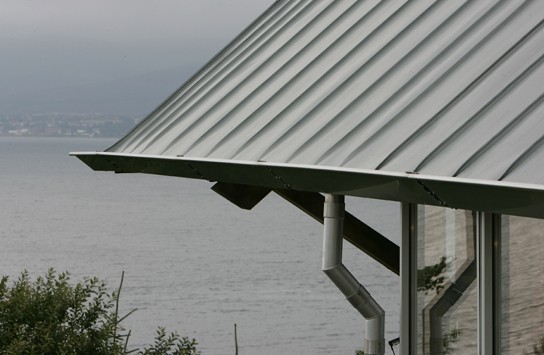Table Of Content
- Medieval development of the Germanic longhouse
- One Of Frank Lloyd Wright's Largest-Ever Houses
- N.Y. Rep. George Santos pleads not guilty to federal fraud charges
- Ricardo Legorreta’s Los Angeles Mansion
- ‘Duplex’ law allowing 4 homes on a lot struck down for California’s charter cities
- These Homes By Big-Name Architects Just Hit The Market—With Curved Walls And Built-In Furniture (Photos)
- Americas[change change source]

A traditional house type of the Sakuddei people,[14] on the island of Siberut, part of the Mentawai Islands some 130 kilometres (81 mi) to the west off the coast of Sumatra (Sumatera), Indonesia is also described as a longhouse on stilts. Some five to ten families may live in each, but they are organized differently inside from those on Borneo. From front to back, such a house, called an "uma", regularly consists of an open platform serving as the main entrance place, followed by a covered gallery. The whole building is raised on short stilts about half a metre off the ground. The front platform is used for general activities while the covered gallery is the favorite place for the men to host guests, and where the men usually sleep. The following first room is entered by a door and contains a central communal hearth and a place for dancing.
Medieval development of the Germanic longhouse
The cross-passage had a door at either end, and with both of these open a breeze was often created which made it an ideal location for winnowing. Today, with the adoption of the single family home, longhouses are no longer used as dwellings but they continue to be used as meeting halls, theaters, and places of worship. Each longhouse contains a number of booths along both sides of the central hallway, separated by wooden containers (akin to modern drawers). The gambrel roof was unique to the Coast Salish of Puget Sound.[2] The front is often very elaborately decorated with an integrated mural of numerous drawings of faces and heraldic crest icons of raven, bear, whale, etc.
One Of Frank Lloyd Wright's Largest-Ever Houses
Several longhouses constituted a village, which was usually located near water and surrounded by a palisade of tall walls made from sharpened logs for protection. His chief partner was geography itself, and Lautner created a series of gravity-defying statement houses in California and beyond. Gina is a composer and a conductor, who worked with many of the Hollywood film studios. In 1966, at the peak of Garcia’s fame, the couple sold up lock, stock and barrel, bought a boat, and went sailing around the world. That's how much a 4,700-square-foot home designed by architect Joseph Esherick sold for in April after the former owner received a sight-unseen offer, according to Sotheby’s International Realty. The house is a four-bedroom, four-bath dwelling across the street from Presidio National Park and represents the third most-expensive single-family home sold in San Francisco so far this year.
N.Y. Rep. George Santos pleads not guilty to federal fraud charges
Holes were made above the hearth to let out smoke, but such smoke holes also let in rain and snow. Ventilation openings, later singly dubbed as a smoke pipe, were positioned at intervals, possibly totalling five to six along the roofing of the longhouse. Missionaries who visited these longhouses often wrote about their dark interiors.
Ricardo Legorreta’s Los Angeles Mansion
The floor was generally flagstones or packed earth and there was a central hearth for the fire. People lived at one end and the animals lived at the other with a partition between them. They are usually divided from each other by walls of their own and contain the living and sleeping spaces. Many of the inhabitants of the Southeast Asian island of Borneo (now Kalimantan, Indonesia, and States of Sarawak and Sabah, Malaysia), the Dayak, live in traditional longhouses, Rumah panjang in Malay, rumah panjai in Iban. They are built raised off the ground on stilts and are divided by a wall running along the length of the building into a more or less public area along one side and a row of private living quarters lined along the other side. Longhouses are large structures, built with the materials available in the local environment, that can house multiple families (usually related as an extended family), or a single family with their livestock.
Eddie Bernice Johnson, trailblazing Dallas lawmaker, dies at 89 - The Dallas Morning News
Eddie Bernice Johnson, trailblazing Dallas lawmaker, dies at 89.
Posted: Sun, 31 Dec 2023 08:00:00 GMT [source]
Longhouses of various sorts have been used by numerous ethnic groups throughout Asia, from prehistoric times until today. The following are a few examples of cultures that have used longhouses and some that continue to do so. Each longhouse contained a number of booths along both sides of the central hallway, separated by wooden containers (akin to modern drawers).
The Iroquois and many other Tribes in the Northeast lived in villages surrounded by a fortified fence called a palisade including the tribes belonging to the Powhatan Confederacy. The densely populated, longhouse villages served the Woodland tribes well for hundreds of years but living in close proximity to each other made the tribes vulnerable to European epidemics. Other tribes who lived in Longhouses included the Abenaki, Fox (Meskwaki), Huron (Wyandot), Lenape (Delaware), Mohican, Narragansett, Sauk (Sac), Pennacook, Pequot, Powhatan and the Wampanoag. The houses were built so that planks on the walls and roofs could be taken off and used at other places, as the people moved seasonally. Paired uprights supported rafters, which, in turn, held roof planks that overlapped like tiles. The position of these poles depended on the lengths of the boards they held, and they were evidently set and reset through the years the houses were occupied.
By the end of the nineteenth century this type of farmhouse was outmoded. What was once its greatest advantage—having everything under a single roof—now led to its decline. Rising standards of living meant that the smells, breath, and manure from the animals was increasingly viewed as unhygienic. In addition the living quarters became too small for the needs of the occupants.
Many were built from timber and often represent the earliest form of permanent structure in many cultures. Types include the Neolithic long house of Europe, the Norman Medieval Longhouses that evolved in Western Britain (Tŷ Hir) and Northern France (Longère), and the various types of longhouse built by different cultures among the indigenous peoples of the Americas. Over seven million seniors and people with disabilities, alongside their families, rely on home and community-based services to provide for long-term care needs in their own homes and communities. This critical care is provided by a dedicated home care workforce, made up disproportionately by women of color, that often struggles to make ends meet due to low wages and few benefits. The last home ever designed by legendary architect Frank Lloyd Wright, also known as the Circular Sun House, is up for sale at $8.9 million in Phoenix. Plans for the home, which is built into a hillside, were on Wright’s drawing table when he died in 1959 and the building was finished in 1967 by Wright's apprentice.
“The market value of a house like this may be slightly lower than the asking price, but people who really love a Frank Lloyd Wright house won’t care,” Peters said of the Norman Lykes House. “For the right person, the money will mean nothing, but yes it can be challenging to sell a house at this price point and they can stay on the market for quite a while." After a years-long restoration, a concrete home designed by Moss, whose other works includes the Patent Office Building in Washington D.C. And Queens Museum of Art, has re-listed for sale in Los Angeles at a reduced price of $10.95 million. Tribes or ethnic groups along the North American Pacific coast with some sort of longhouse building traditions include the Haida, Tsimshian, Tlingit Makah, Clatsop, Coast Salish and Multnomah. Protective palisades were built around the dwellings; these stood 4.3 to 4.9 m (14 to 16 ft) high, keeping the longhouse village safe.
Uma are traditional houses of the Sakuddei found on the western part of the island of Siberut in Indonesia. The island is part of the Mentawai islands off the west coast of Sumatra. The Iroquois were also known as the Haudenosaunee or the "People of the Longhouse". The term 'longhouse' referred to the construction of their dwellings and their communal lifestyle.








